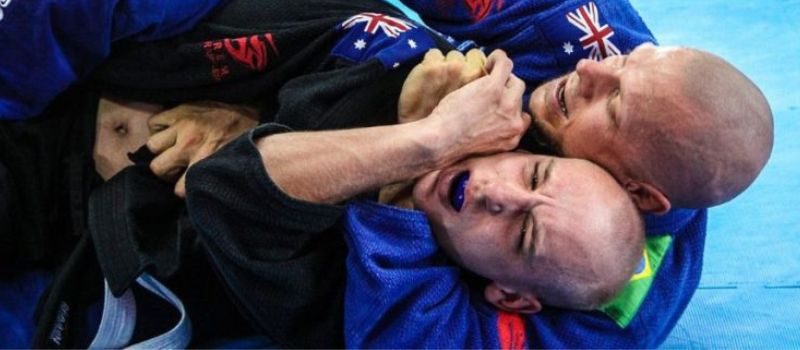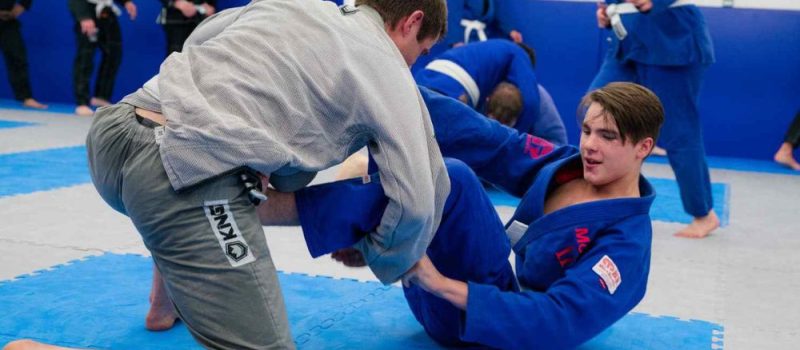What is Bjj? Brazilian Jiu-Jitsu (BJJ) is a captivating martial art discipline that has gained immense popularity around the world. With its ancient roots and modern techniques, BJJ has become a widely respected martial art style that emphasizes leverage, pressure, and timing to achieve non-violent submissions. In this comprehensive guide, we will explore the origins of Jiu-Jitsu, the difference between Jiu-Jitsu and Brazilian Jiu-Jitsu, and the various styles and techniques associated with this captivating martial art
What is Jiu-Jitsu?
The term “Jiu-Jitsu” derives from the Japanese words “Jū” meaning “gentle” and “Jutsu” meaning “art.” Essentially, Jiu-Jitsu is referred to as the “gentle art”. It is a predominantly ground-based martial art that focuses on close-contact “grappling” holds and techniques, including chokes and joint manipulations. Unlike other martial arts that emphasize strikes and kicks, Jiu-Jitsu prioritizes leverage, angles, pressure, timing, and knowledge of human anatomy to subdue opponents.

The Origins of Jiu-Jitsu
The origins of Jiu-Jitsu can be traced back thousands of years. While different theories exist, many agree that its roots can be found in ancient India, where Buddhist monks developed techniques to protect themselves while traveling without causing harm to their attackers. Over time, these techniques spread to feudal Japan, where they evolved into an effective hand-to-hand combat system during times of war. Jiu-Jitsu eventually transitioned into an art form and a competitive activity.
The Birth of Brazilian Jiu-Jitsu
The Brazilian style of Jiu-Jitsu emerged from the import of Japanese Jiu-Jitsu and Judo to South America in the early 1900s. It was further developed and transformed into a new martial art style by Brazilian pioneers. Three influential figures, Carlos Gracie, Helio Gracie, and Luiz França, contributed significantly to the development of Brazilian Jiu-Jitsu. They maximized the effectiveness of existing techniques, created new ones, and established a distinct martial art that would later become known as Brazilian Jiu-Jitsu.
Jiu-Jitsu vs. Brazilian Jiu-Jitsu
The Brazilian style of Jiu-Jitsu emerged from the import of Japanese Jiu-Jitsu and Judo to South America in the early 1900s. It was further developed and transformed into a new martial art style by Brazilian pioneers. Three influential figures, Carlos Gracie, Helio Gracie, and Luiz França, contributed significantly to the development of Brazilian Jiu-Jitsu. They maximized the effectiveness of existing techniques, created new ones, and established a distinct martial art that would later become known as Brazilian Jiu-Jitsu.
jiu-jitsu martial arts
Positions play a crucial role in Brazilian Jiu Jitsu, as they dictate the flow of the fight and provide strategic advantages. Some common positions include the guard, side control, mount, and back control. Each position offers different opportunities for offense and defense, requiring practitioners to develop a well-rounded skill set.
The Rise of Brazilian Jiu-Jitsu
The spread of Brazilian Jiu-Jitsu began with the Gracie family and their efforts to promote their martial art style. In 1915, Mitsuyo Maeda, a world-renowned Japanese judoka, arrived in Brazil and started teaching Jiu-Jitsu and Judo. His teachings influenced Carlos and Helio Gracie, who went on to become the founders of Brazilian Jiu-Jitsu. The popularity of Brazilian Jiu-Jitsu grew slowly until the 1990s when the UFC (Ultimate Fighting Championship) brought mixed martial arts, including Brazilian Jiu-Jitsu, into the mainstream. Today, Brazilian Jiu-Jitsu is practiced worldwide and is widely recognized as a highly effective martial art.

Different Styles of Jiu-Jitsu
Over time, various styles of Jiu-Jitsu have evolved, each with its unique characteristics and approaches. Some notable styles include:
- Gracie Jiu-Jitsu:
Developed by the Gracie family, it focuses on self-defense and ground fighting techniques.
- Checkmat Jiu-Jitsu:
Known for its strong emphasis on positional dominance and submission grappling.
- Jew Jitsu:
A playful term used to describe a fusion of Brazilian Jiu-Jitsu and Jewish culture.
- Cleber Jiu-Jitsu:
Founded by Cleber Luciano, it emphasizes the integration of Jiu-Jitsu techniques into real-life self-defense situations.
The Benefits of Practicing Brazilian Jiu-Jitsu
Beyond its physical demands, Brazilian Jiu-Jitsu provides numerous benefits for practitioners. It is often referred to as “human chess” due to its mental challenges and strategic nature. The physical benefits of Brazilian Jiu-Jitsu include increased strength, improved cardiovascular fitness, weight loss, and enhanced muscle tone. Moreover, the art form enhances body awareness, balance, and reactive ability. Mentally, Brazilian Jiu-Jitsu develops reasoning skills, quick thinking, and the ability to remain calm under pressure. It also serves as an outlet for stress and provides a supportive community
Conclusion
Brazilian Jiu-Jitsu is a remarkable martial art that combines ancient techniques with modern principles. Its origins can be traced back to ancient India and feudal Japan, with its development into a distinct martial art occurring in Brazil. Brazilian Jiu-Jitsu’s focus on leverage, timing, and ground fighting has made it a highly effective self-defense system and a popular competitive sport. Whether you’re looking to improve your physical fitness, develop mental acuity, or learn self-defense, Brazilian Jiu-Jitsu offers a rewarding journey for practitioners of all backgrounds and abilities. So, dive into the world of Brazilian Jiu-Jitsu and unlock your full potential on and off the mats.
Frequently Asked Questions
Q: What makes Brazilian Jiu-Jitsu unique?
A: Brazilian Jiu-Jitsu stands out for its focus on ground fighting, leverage, and submissions. It enables individuals of different sizes and strengths to defend themselves against larger opponents.
Q: Can anyone practice Brazilian Jiu-Jitsu?
A: Yes, Brazilian Jiu-Jitsu is a martial art that can be practiced by individuals of all ages, genders, and physical abilities. Its techniques and principles allow smaller and weaker individuals to overcome larger and stronger opponents.
Q: How long does it take to become proficient in Brazilian Jiu-Jitsu?
A: The journey to proficiency in Brazilian Jiu-Jitsu varies for each individual. It requires consistent training, dedication, and patience. Progress is measured through the earning of belts, with black belt being the highest achievement.
Q: Is Brazilian Jiu-Jitsu a competitive sport?
A: Yes, Brazilian Jiu-Jitsu has a thriving competitive scene, with tournaments held worldwide. Competing in Brazilian Jiu-Jitsu provides an opportunity to test one’s skills against opponents of similar skill levels.
Feel free to comment down there,what you think about this blog


